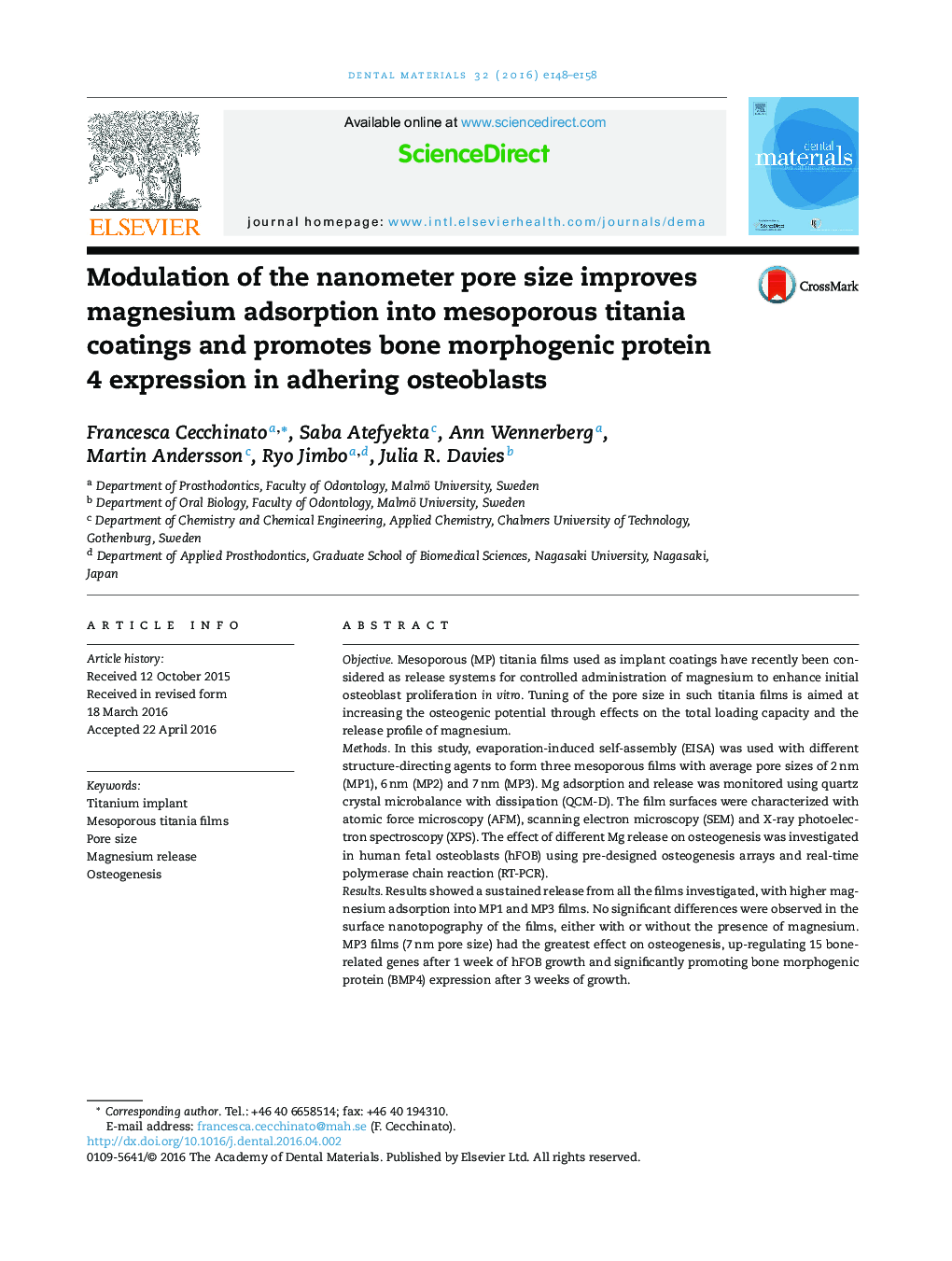| Article ID | Journal | Published Year | Pages | File Type |
|---|---|---|---|---|
| 1420412 | Dental Materials | 2016 | 11 Pages |
•The increase in 1 nm (from 6 to 7) increased the Mg adsorption.•Mg adsorption did not alter the mesoporous surface topography.•Osteogenesis is promoted by Mg released from 7 nm films.•Mg form 7 nm films significantly increased bone morphogenic protein 4 expression.•Mesoporous bioactivity is enhanced by 1 nm pore size increase.
ObjectiveMesoporous (MP) titania films used as implant coatings have recently been considered as release systems for controlled administration of magnesium to enhance initial osteoblast proliferation in vitro. Tuning of the pore size in such titania films is aimed at increasing the osteogenic potential through effects on the total loading capacity and the release profile of magnesium.MethodsIn this study, evaporation-induced self-assembly (EISA) was used with different structure-directing agents to form three mesoporous films with average pore sizes of 2 nm (MP1), 6 nm (MP2) and 7 nm (MP3). Mg adsorption and release was monitored using quartz crystal microbalance with dissipation (QCM-D). The film surfaces were characterized with atomic force microscopy (AFM), scanning electron microscopy (SEM) and X-ray photoelectron spectroscopy (XPS). The effect of different Mg release on osteogenesis was investigated in human fetal osteoblasts (hFOB) using pre-designed osteogenesis arrays and real-time polymerase chain reaction (RT-PCR).ResultsResults showed a sustained release from all the films investigated, with higher magnesium adsorption into MP1 and MP3 films. No significant differences were observed in the surface nanotopography of the films, either with or without the presence of magnesium. MP3 films (7 nm pore size) had the greatest effect on osteogenesis, up-regulating 15 bone-related genes after 1 week of hFOB growth and significantly promoting bone morphogenic protein (BMP4) expression after 3 weeks of growth.SignificanceThe findings indicate that the increase in pore width on the nano scale significantly enhanced the bioactivity of the mesoporous coating, thus accelerating osteogenesis without creating differences in surface roughness.
